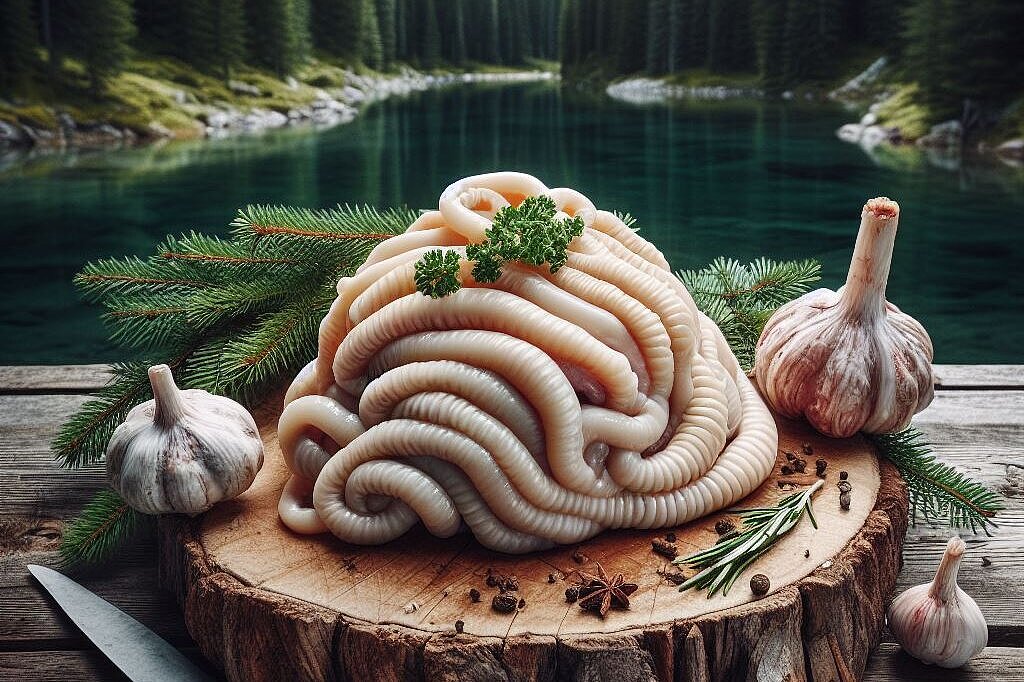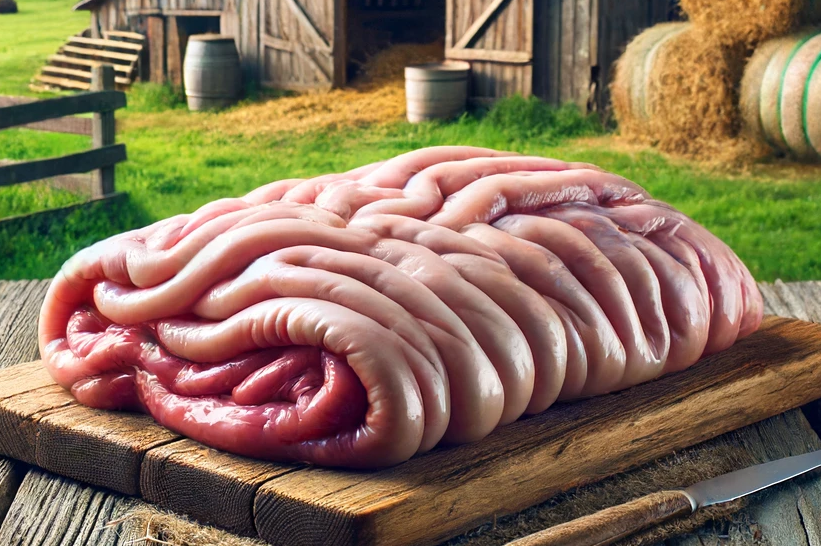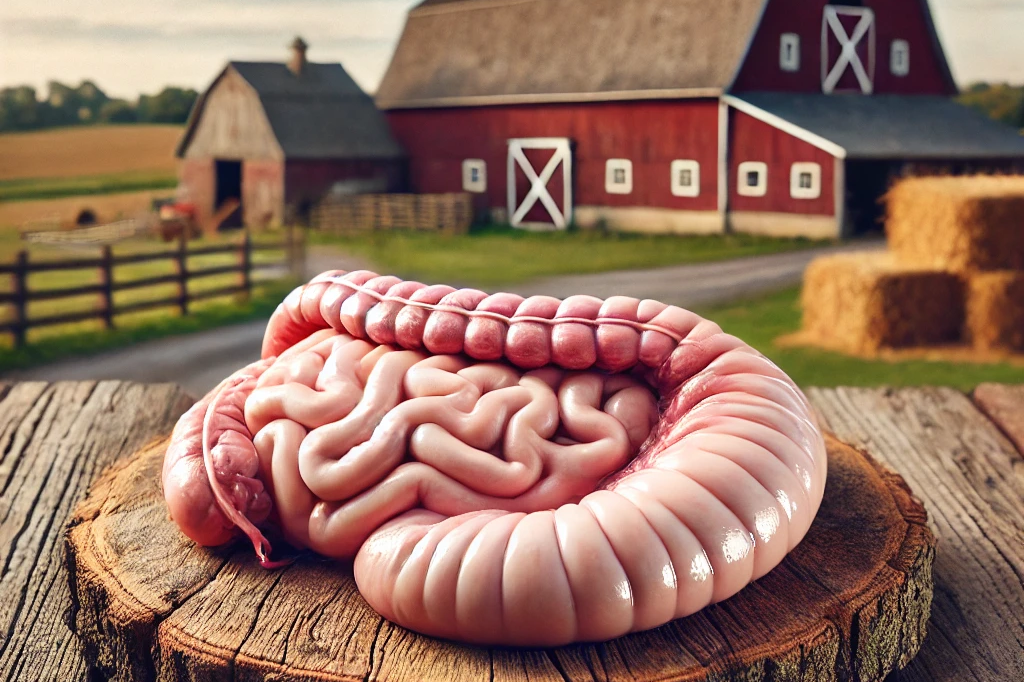Buffalo stomach

What is buffalo stomach?
Buffalo stomach is the stomach of buffaloes, which are ruminants. This means that they chew their food several times and digest it in a multi-part stomach. The buffalo stomach consists of four chambers: the rumen, the reticulum, the pouch stomach and the abomasum.
The rumen is the largest chamber and contains many bacteria and protozoa that decompose the grass. The reticulum filters the feed further and the abomasum removes excess water. The abomasum is the last part of the stomach and is similar to the stomach of non-ruminants.
Buffalo gizzards are usually offered as a dried snack or as an ingredient in wet dog food. It has a high protein content and contains many vitamins and minerals. It can also support the dog's intestinal flora as it still contains grass residues and microorganisms.
What are the benefits of buffalo stomach for dogs?
Buffalo stomach can have several benefits for your dog:
- It's a high-quality source of protein that your dog can utilize well.
- It is hypoallergenic, i.e. it rarely triggers allergies.
- It is low in fat and calories compared to other types of meat.
- It can promote your dog's dental health if you give it as a dried chew.
- It can stimulate your dog's digestion and prevent diarrhea.
What are the disadvantages of buffalo stomach for dogs?
Buffalo stomach also has some disadvantages for your dog:
- It has a strong odor that can be unpleasant for some people.
- It can be hard to find or expensive as it is not as common as other meats.
- It can contain parasites if not processed properly. That's why you should only buy buffalo stomach that comes from a controlled source and has been thoroughly cleaned.
- Buffalo stomach can contain too much iron, which can lead to an overdose in some dogs. Therefore, do not feed too much buffalo stomach or combine it with other sources of iron.
How do I feed buffalo stomach correctly?
If you want to feed your dog buffalo stomach, there are a few things you should bear in mind:
- Only feed high quality buffalo stomach from trusted sources.
- Only feed as much buffalo stomach as your dog needs. A rule of thumb is about 2 to 3 percent of their body weight in meat per day.
- Feed a varied diet and combine buffalo stomach with other meats or vegetables.
- Observe your dog after eating for possible intolerances or side effects such as diarrhea or vomiting.
Buffalo stomach is an interesting ingredient for your dog food. It is rich in nutrients and can promote your dog's health. However, don't feed it too often or in too large quantities and pay attention to the quality.
Properties 13
Are you looking for other ingredients with a specific property?
Just click on them to find more.
If you notice any signs of hypersensitivity or poisoning in your dog, you should see your vet immediately. We are not a substitute for a vet, but we try to be as accurate as possible. Every dog reacts differently and we recommend you get a second opinion or consult your vet if in doubt.
Stay healthy and take good care of your four-legged friend!😊
Similar to Buffalo stomach
Beef rumen is part of the stomach of cattle. It consists of three layers: the inner stomach lining, a muscle layer and the peritoneum. The rumen is the first of four stomachs that cattle have. This...
Sheep's stomach is part of the digestive system of sheep, which are ruminants. This means that they first ingest their feed in the rumen, where it is broken down by microorganisms. They then...
Chicken stomachs are part of the chicken's digestive system. They are used to break down and pre-digest the food. Chicken stomachs consist of muscle meat and have a firm and chewy consistency. They...
Pig stomach is the stomach of the pig, which is a by-product of slaughtering. The stomach consists of a thick layer of muscle lined with a mucous membrane. The mucous membrane contains enzymes and...



